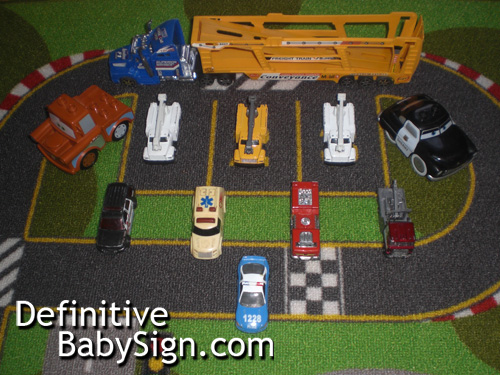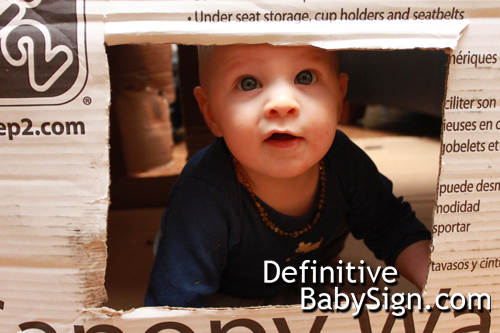 Starting at about 20 months old, my son bugged me several times a day to PLAY “t-t-t-t” with him. “T-t-t-t” was his word for “truck” which he had been saying for quite a few months. For whatever reason he preferred his guttural “t” sound over the sign. Did I sometimes prefer to do other things? Of course. But I never was annoyed and was always thankful that he was in my life. The moment I had completed something of minor importance, I always took the time to get down on the floor with him and push trucks around.
Starting at about 20 months old, my son bugged me several times a day to PLAY “t-t-t-t” with him. “T-t-t-t” was his word for “truck” which he had been saying for quite a few months. For whatever reason he preferred his guttural “t” sound over the sign. Did I sometimes prefer to do other things? Of course. But I never was annoyed and was always thankful that he was in my life. The moment I had completed something of minor importance, I always took the time to get down on the floor with him and push trucks around.
We played “ramp” by propping up a large book against the sofa so we could push trucks down. We lined all the trucks up and ran them down the hall into the kitchen and then back. We also built a shop together out of cardboard to hide the trucks inside.
My son and I also enjoyed books together – of all sorts. My favourites were his bird books which helped us identify bird species. By 22 months he learned robin, black bird, hawk, owl, crow, humming bird, chickadee, ducks, geese, turkey, dove, and probably even more, but of which he couldn’t quite figure out how to pronounce. He also learned one of the book’s author “Robby, robby, robby!” If you’re curious we read “Backyard Birds” by Robert Bateman which we borrowed from the library. From book we became backyard naturalists. Imagine my wife’s surprise when she and he caught view of an overhead hawk! Robins and crows where always plentiful too and he’d always make it a point to show us what was about in our neighborhood.
Take it from a forward looking person – enjoy your kids while they still want to enjoy you. While you might covet some time to yourself right now, it’s only due to the heat of the moment. As surely as you child will grow old and move out, he’ll also want more time to himself and to spend maturing into his own. Right now is the time to foster your connection with your child, when he’s hungry for love, affection and guidance. Instead of rebuffing his interest in you, embrace it back with full loving arms and squeeze tight! There will be many things you’ll regret in your life, but spending time with your baby won’t fall on that list.
Love that your baby loves you back.




